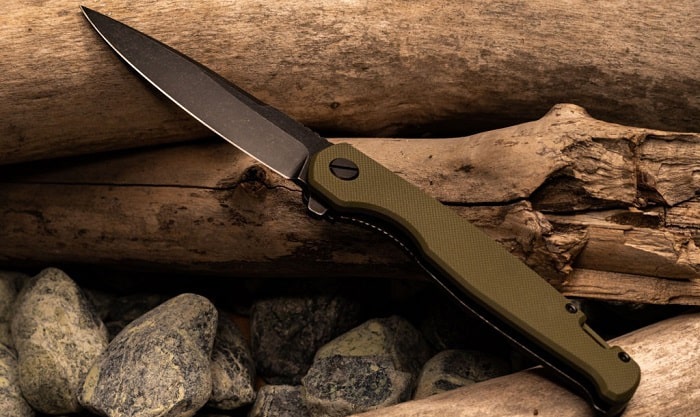For those who hold a passion for culinary excellence, the art of knife maintenance is as crucial as the art of cooking itself. In the world of kitchen professionals, there's no tool more revered than the knife. Yet, amidst this reverence, a plethora of knife sharpening myths persists, clouding judgment and potentially leading to practices that could harm your prized instruments. Today, we delve into these myths, unraveling truths that will enhance your understanding and care of your kitchen knives.

Misconception #1: A Sharp Knife is Dangerous
Amongst the most pervasive myths in the culinary world is the belief that a sharp knife is inherently dangerous. Contrary to this myth, a sharp knife is actually safer and more efficient than a dull one. A sharp blade requires less force to cut through ingredients, reducing the likelihood of slips and accidents. This fundamental truth underscores the importance of regular and proper sharpening to maintain the effectiveness and safety of your knives.
Using the Right Sharpening Tools
In the pursuit of maintaining sharpness, choosing the right tools is paramount. While many believe that any sharpening tool will suffice, kitchen professionals understand the significance of selecting the right accessories for sharpening. From whetstones to honing rods, each tool serves a specific purpose in the sharpening process, ensuring precision and longevity of the blade.
Misconception #2: Knives Should be Sharpened Frequently
Another common myth suggests that frequent sharpening is necessary to maintain a perfect edge. However, over-sharpening can lead to the premature wearing down of your blade. Instead, understanding the balance between honing and sharpening is key. While honing aligns the edge, sharpening should be reserved for when the knife truly needs it. Regular honing can extend the time between sharpening, preserving the integrity of your knife.
Spotting When Your Knife Needs Sharpening
For those unsure of when to sharpen, several indicators can guide you. One method is the paper test, where a sharp knife should effortlessly slice through paper without snagging. Additionally, if your knife struggles with cutting through tomatoes or other soft-skinned produce, it's a sign that sharpening is due.
Misconception #3: All Knives Are Sharpened the Same Way
It's a common oversight to assume that all knives require the same sharpening technique. In reality, each knife's design and intended function dictate its sharpening requirements. For instance, a serrated knife demands a distinct approach compared to a straight-edged chef's knife. Understanding these nuances is crucial for kitchen professionals who wish to preserve the unique characteristics of their diverse knife collections.
Understanding Different Knife Types
For a deeper dive into knife types and their specific care, check out this comprehensive guide on pocket and fixed blade knives. This knowledge not only enhances your sharpening skills but also empowers you to make informed purchasing decisions, ensuring each knife serves its intended purpose with precision.
Misconception #4: Manual Sharpening is Superior to Electric
The debate between manual and electric sharpening tools is ongoing. Many purists hold that manual sharpening, particularly with a whetstone, is superior. While it's true that manual sharpening offers unparalleled control, modern electric sharpeners have evolved significantly. They provide consistent results with minimal effort, making them a viable option for busy kitchen professionals. The key is to understand the strengths and limitations of both methods and choose what best suits your needs and skill level.
Integrating Sharpening Practices
For those interested in exploring electric options, consider reading this insightful article on choosing the right electric sharpeners. As technology advances, integrating these tools can enhance your knife maintenance routine, ensuring your blades remain in peak condition.
Misconception #5: A Sharpened Knife Stays Sharp Indefinitely
Perhaps the most misleading myth is the belief that once sharpened, a knife remains sharp indefinitely. In reality, every knife blade wears down with use, necessitating regular maintenance. This includes not only sharpening but also proper storage and handling to minimize dulling. Adopting good practices, such as using a cutting board and avoiding hard surfaces, can significantly extend the life of your knife's edge.
Maintaining Knife Longevity
To further explore how to care for your knives, visit this guide on common maintenance mistakes. By understanding these common pitfalls, you can ensure your knives remain sharp and functional, ready to tackle any culinary challenge.

Frequently Asked Questions
Q1: How often should I sharpen my knife?
A: The frequency of sharpening depends on usage. Regular honing can reduce the need for frequent sharpening, typically extending it to a few times a year for average home use.
Q2: Can I use a knife sharpener on all types of knives?
A: Not all knives are suitable for use with every sharpener. Serrated and ceramic knives, for instance, require specialized sharpening tools.
Q3: Is it necessary to hone my knife?
A: Yes, honing is crucial as it realigns the edge of the blade, maintaining its sharpness and extending the time between sharpenings.
This article contains affiliate links. We may earn a commission at no extra cost to you.


























